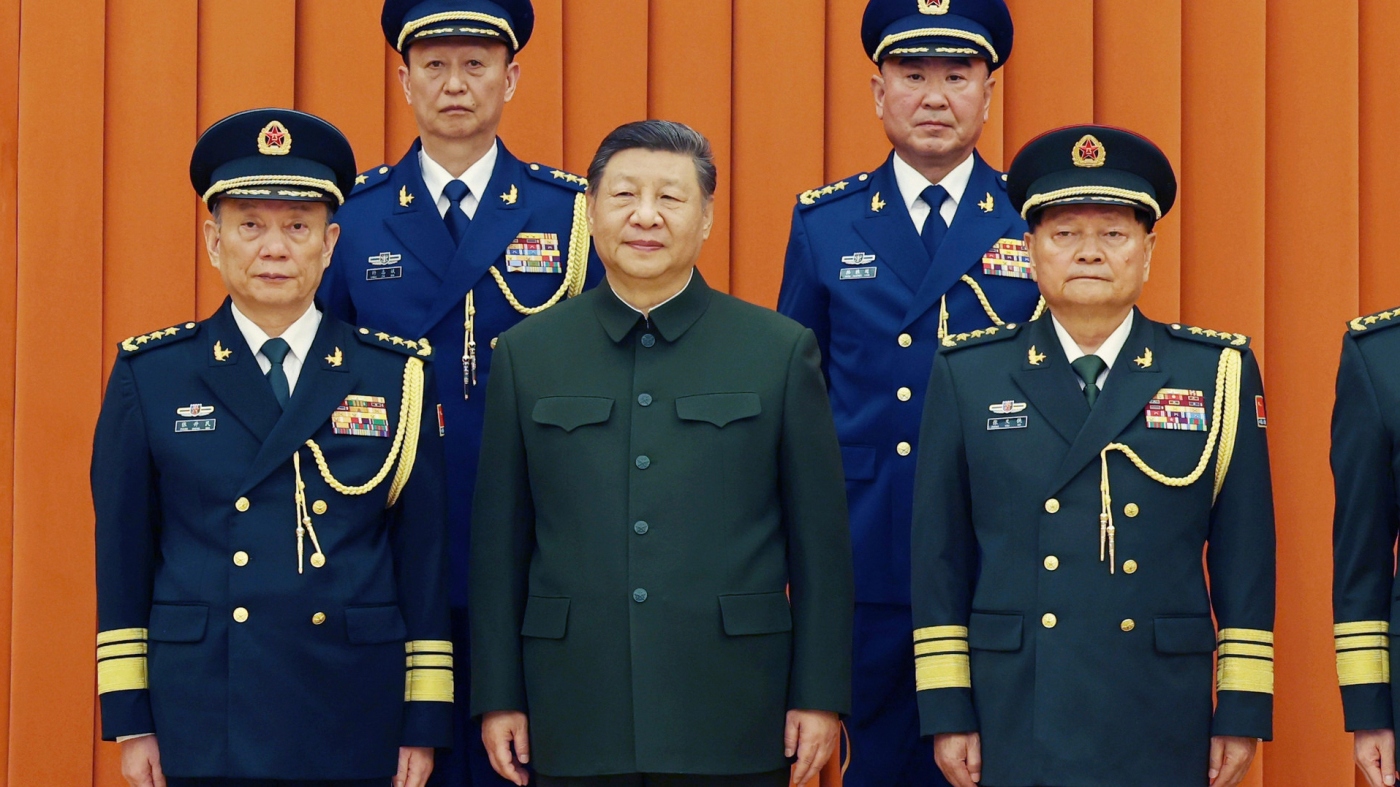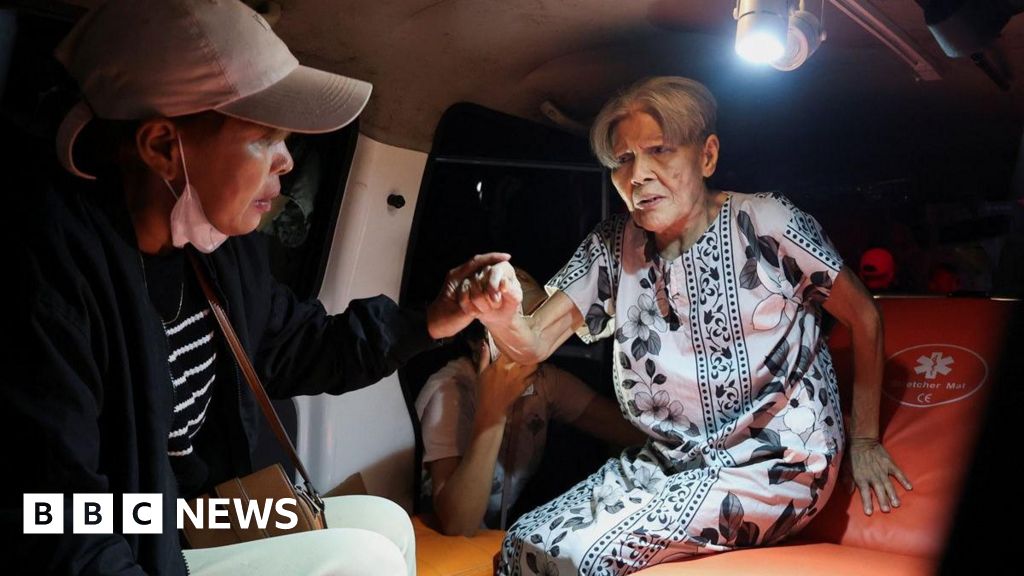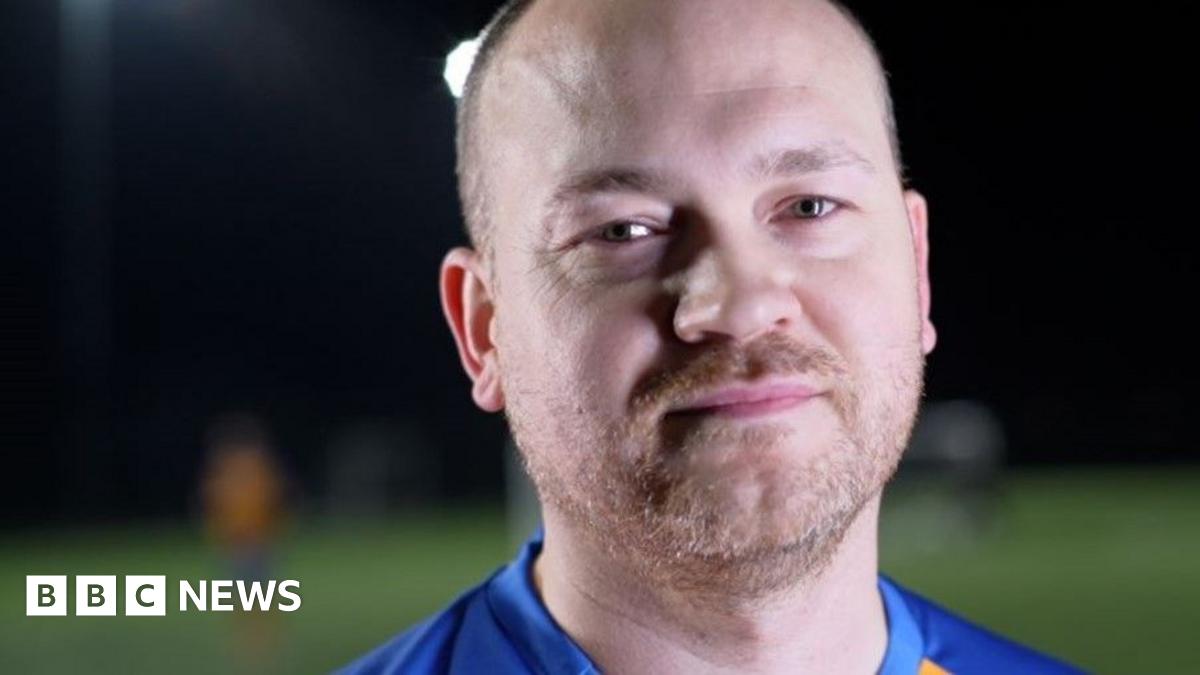Beneath the Moon’s cratered surface lie networks of lava tubes and deep pits, natural caves that could shelter future lunar bases from cosmic radiation and wild temperature swings. These underground structures represent some of the…
Blog
-

Chinese military stages drills around Taiwan : NPR
In this photo released by Xinhua News Agency, Chinese President Xi Jinping, also chairman of the Central Military…
Continue Reading
-

Tents in Gaza flooded again
Tent camps housing displaced Palestinians in Gaza have been flooded again after heavy winter rain.
Local health officials say at least 12 people, including a newborn baby, have died in the last fortnight from weather-related illnesses, and…
Continue Reading
-

Stocks Hover Near Record, Silver Turns Volatile: Markets Wrap
(Bloomberg) — Global stocks held gains from a record-breaking run fueled by artificial intelligence that’s helped markets rebound from an April slump sparked by tariff concerns. Volatility gripped precious metals such as silver, which climbed to another all-time high.
The MSCI All Country World Index — one of the broadest measures of the equity market — was steady after rising 1.4% last week to a new high as a much-expected year-end rally took hold. A gauge of Asian shares advanced 0.3% in a seventh straight day of gains, boosted by tech and industrials. European futures rose 0.3% while contracts on the S&P 500 edged lower after the US benchmark finished near its peak on Friday.
Silver gyrated after smashing through $80 an ounce for the first time amid a historic surge powered by speculative trades and a persistent mismatch between supply and demand. Gold was down more than 1% after reaching a fresh high in the previous session, while copper jumped more than 6% to hit a record on the London Metal Exchange.
Precious metals have emerged as a hot corner of financial markets in recent months, boosted by elevated central-bank purchases, inflows to exchange-traded funds and three successive rate cuts by the Federal Reserve. Lower borrowing costs are a tailwind for the commodities, which don’t pay interest, and traders are betting on more rate cuts in 2026.
“We are witnessing a generational bubble playing out in silver,” Tony Sycamore, market analyst at IG Australia, wrote in a note Sunday. “Relentless industrial demand from solar panels, EVs, AI data centers and electronics, pushing against depleting inventories, has driven physical premiums to extremes.”
Monday’s early momentum for precious metals had come after a comment by Elon Musk over the weekend that highlighted the growing investor frenzy around them. Musk replied to a tweet on Chinese export restrictions by saying on X: “This is not good. Silver is needed in many industrial processes.”
In the last week, frictions in Venezuela — where the US has blockaded oil tankers — and strikes by Washington on Islamic State in Nigeria have also added to the haven appeal of these metals. With silver inventories near their lowest on record, there’s a risk of supply shortages that could impact multiple sectors.
What Bloomberg strategists say…
“Silver has particular drivers which mean it is understandable for it to be outperforming the general rally in metals, precious and otherwise, against the US dollar. Nevertheless it is very tough to justify the parabolic ramp-up in silver as it leaves peers behind.”
Garfield Reynolds, Markets Live Strategist. For full analysis, click here.
In geopolitical news, President Donald Trump said he made “a lot of progress” in talks with Ukrainian President Volodymyr Zelenskiy over a possible peace deal, but that it might take a few weeks to get it done and there’s no set timeline.
Oil rose as the US-led talks failed to yield a breakthrough, and as China vowed to support growth next year. It is still on track for a fifth monthly drop in December, which would be the longest losing streak in more than two years.
Elsewhere in markets, Bitcoin rallied more than 2% while a gauge of the dollar was steady.
The global equities gauge has risen nearly 22% in 2025, heading for a third straight annual gain and the biggest since 2019. Trends in AI as well as the path of the Fed’s interest rates are seen by investors as two of the most crucial factors that will determine how equities perform in 2026. The Fed is scheduled to release minutes from its December policy meeting later this week.
“Stocks can continue their party into 2026 because rate cuts are coming, global growth is robust, and the worst of the tariff threats seem to be already in the price,” said Nirgunan Tiruchelvam, an analyst at Aletheia Capital.
Stocks
S&P 500 futures were little changed as of 6:50 a.m. London time Nasdaq 100 futures fell 0.2% Futures on the Dow Jones Industrial Average were little changed The MSCI Asia Pacific Index rose 0.3% The MSCI Emerging Markets Index rose 0.5% Hong Kong’s Hang Seng fell 0.5% The Shanghai Composite was little changed Euro Stoxx 50 futures rose 0.3% Currencies
The Bloomberg Dollar Spot Index was little changed The euro was little changed at $1.1764 The Japanese yen rose 0.2% to 156.26 per dollar The offshore yuan was little changed at 7.0043 per dollar The British pound was little changed at $1.3494 Cryptocurrencies
Bitcoin rose 2.6% to $89,775.64 Ether rose 3.3% to $3,032.46 Bonds
The yield on 10-year Treasuries was little changed at 4.13% Germany’s 10-year yield was unchanged at 2.86% Britain’s 10-year yield was little changed at 4.51% Australia’s 10-year yield advanced two basis points to 4.76% Commodities
Spot gold fell 1.1% to $4,483.53 an ounce West Texas Intermediate crude rose 1% to $57.32 a barrel This story was produced with the assistance of Bloomberg Automation.
–With assistance from Carmeli Argana, Rita Nazareth, Ruth Carson and Abhishek Vishnoi.
©2025 Bloomberg L.P.
Continue Reading
-

A-Listers inspire surge in Brits opting for pescatarian-style diets
The eating habits of celebrities including Harry Styles, Victoria Beckham, Natalie Portman and Amanda Holden are sparking a surge in pescatarian-style diets among UK consumers this January, according to new research from Young’s…
Continue Reading
-

GEEKOM Returns to CES 2026 with Premium Laptops and Next-Generation Mini PCs
TAIPEI, Dec. 29, 2025 /PRNewswire/ — GEEKOM will make its fourth consecutive appearance at CES 2026, taking place from January 6 to 9 at Booth 35025 in LVCC South Hall 2. As a leader in the Mini PC industry, GEEKOM is…
Continue Reading
-

Fire in nursing home kills 16 in Indonesia
Sixteen people have been killed and three left injured after a fire tore through a nursing home for elderly residents in northern Indonesia, local authorities say.
The fire department was alerted to a fire at Damai retirement home in the city of…
Continue Reading
-

Fire in nursing home kills 16 in Indonesia
Authorities say police are trying to identify the deceased, urging family members of the victims to contact the hospital where the bodies have been taken to.
Many of them were in an “unrecognisable” condition, a local official told online news…
Continue Reading
-

Christmas comfort for Sands Utd footballers united by baby loss
Mr Kizis-Stevens said it was important for anyone who had suffered a similar bereavement to try to seek help from family, friends or specialist groups.
He said the unexpected loss of their baby had been harrowing and led him to contact the…
Continue Reading
-

Issue Brief on “China’s Policy Towards Jammu and Kashmir Dispute”
Introduction
China’s policy towards Jammu and Kashmir has been primarily shaped by its close ties with Pakistan, its strategic competition with India, and its…
Continue Reading
